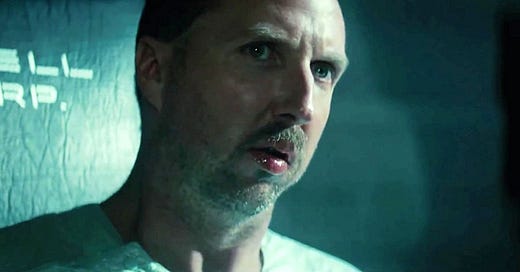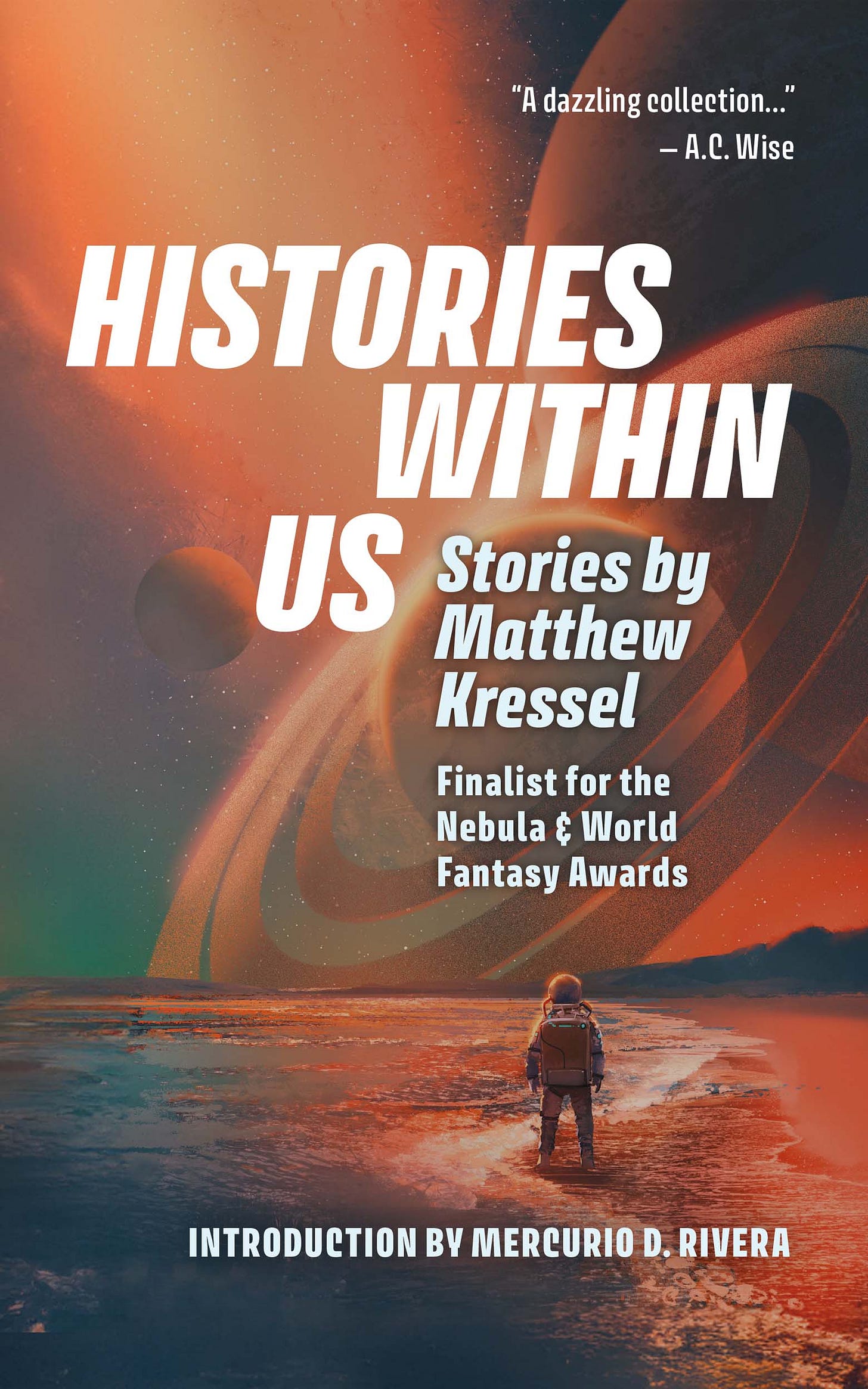I’ve seen the original Blade Runner film over a hundred times. At one point I could recite the entire film from memory. I used to throw New Year’s Eve parties, and after midnight my friends would have me play the film, skip to a random scene, and with my back to the TV and the audio muted, subtitles on so my friend could check, I’d dub the lines verbatim from memory. Even now, just a few lines can set me off…
“1187 at Hunterwasser?”
“Yeah, that’s the hotel.”
“What?”
“Where I live.”
“Nice place?”
“Yeah, sure, I guess…”
When I started going to writing conventions and doing panels, I suggested a Blade Runner panel because I knew the film so well. And as I listened to my co-panelists and the audience discuss the film I was struck by how its dystopian aesthetic so thoroughly pervaded our view of the future. When most people imagined the future, they didn’t think of Picard’s Enterprise or post-scarcity or a world of abundance. They thought of polluted cities and rain-choked streets and a dying Earth. Dystopias and post-apocalyptic fiction were all the rage (then and still now). The Hunger Games and Uglies and Divergent and The Walking Dead and Battlestar Galactica and Terminator: The Sarah Connor Chronicles. The common theme among these is a few lone “heroes” fighting for survival in a brutal, unforgiving, uncaring world.
Post-apocalyptic fiction is nothing new. Eschatology, or the notion of a final reckoning for humanity, has been with us since humans first began writing and probably long before. When faced with the knowledge of our own eventual demise, it’s not hard to imagine a societal one. Back then, when I googled “future city” to see what artists were envisioning I was shocked by the results. Almost all of the results were dystopian: bleak, neon-lit, rainy, polluted, over-crowded cityscapes right out of Blade Runner. This dystopian cautionary tale had somehow become our default view of the future1. When we envisioned the future, our dreams were bleak.
I decided then that I would offer counter narratives. I would envision possible futures that weren’t bleak, dystopian, or hopeless. I would try to offer alternatives to the pessimism I saw everywhere. I’ve written many so-called “optimistic” stories, and I’ve blogged about some of them here.
But as I wrote these stories I discovered I also felt the need to explicitly challenge the nihilism that sticks to many of us like a burr. I had to attack the belief that cynicism and pessimism are the “realist” or somehow the “smartest” choice. I wanted to highlight our narcissism and hubris and the underlying callousness and cruelty of our culture that few seem to acknowledge or consciously address. You cannot heal a wound if you don’t know you have one.
In my story “Now We Paint Worlds” (Tor.com / Reactor) a representative of a galactic union confronts a nihilist who is convinced that humanity is vermin that needs to be eradicated, and she must question her own beliefs about the human desire to settle the galaxy.
In my story “Your Future is Pending” (Clarkesworld Magazine), a woman who takes care of her demented father tries to survive in a system that is gamed toward servicing the rich and powerful, while the rest suffer under AI systems that continually deny them the services and care they need.
In my story “Love Engine Optimization” (Lightspeed Magazine) an expert hacker uses their skills to manipulate and seduce the “perfect” partner, only to find themselves perennially dissatisfied.
In my story “Movie Night” (StarShipSofa) a man makes his living selling AI replicas of dead people to surviving relatives. He hates his job, hates manipulating people, but it’s either this or living in his car. His only friend is an AI replica of his dead daughter whom he watches movies with each night.
And without giving too much away, my story “Model Collapse” (forthcoming from Reactor) is about the dangers of relying too much on technology to automate our lives.
A fish in water doesn’t know it’s in water. Many of us — maybe most of us — don’t see our own pervasive nihilism, our love affair with destruction, disruption, devolution, dissolution, devaluation, deconstruction. We don’t question the “burn, burn, burn”, “I came in like a wrecking ball”, YOLO, IDGAF, paving paradise to put up a parking lot posture toward long-standing physical, societal, artistic, and cultural structures. We haven’t consciously acknowledged our desire to tear down old walls without building any new ones. Many of us haven’t wondered why we love film and TV shows where the “hero” protagonists survive megadeaths of innocents, (Squid Game, The Last of Us, Fallout, pretty much every Marvel and DC film.) Collectively, as a culture, we haven’t consciously acknowledged our shadow. As Carl Jung says, “Until you make the unconscious conscious, it will direct your life and you will call it fate.”
I think this perfectly explains where we are politically today.
In writing news, Advance Reader Copies of my forthcoming novel, Space Trucker Jess, have arrived. If you would like a review copy, please email me with a request. You can also pre-order the ebook here. The trade paperback pre-order link will be up soon.
Histories Within Us, my debut short story collection with eighteen works of my fiction, including my Nebula-nominated works, is available at most bookstores, including Amazon, Barnes & Noble, and Bookshop.org.
O. Henry Award-winning author Karen Heuler writes, “The stories in this collection are breathtaking, and after a few of them you feel the universe pressing in on you or—and this is worse—observing you. [A] great collection... Highly recommended.”
That’s it for now. Things are quite tumultuous here in the U.S., and I suspect they will get worse before they get better. Hang in there, and make sure to take care of yourselves and your loved ones.
Matt
Thanks for reading. If you want to learn more about my work, check out my website here.
This has changed in recent years, thankfully. But it’s still pervasive in TV and film.







